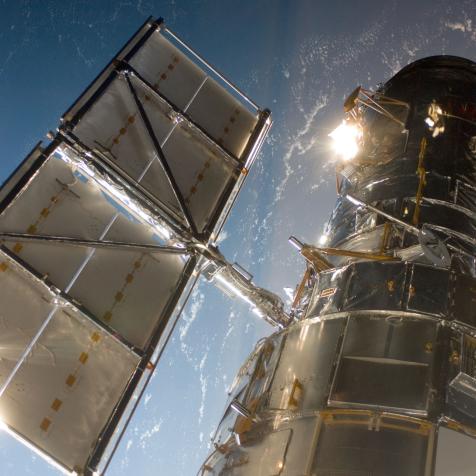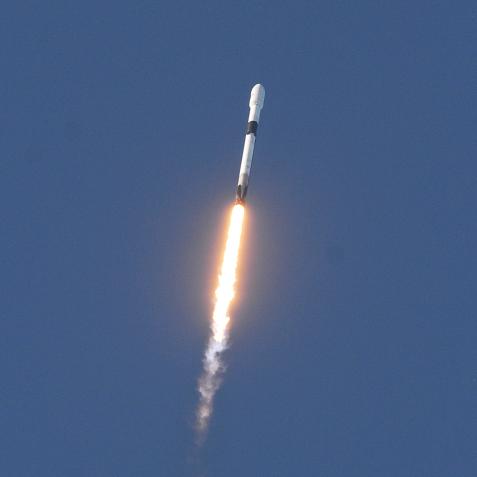
NASA/JPL-Caltech
NASA’s Perseverance Rover Has Landed on Mars
After a harrowing landing and traveling nearly 292.5 million miles, NASA's Perseverance with Ingenuity touched down on Mars at 3:55P ET today, February 18, 2021.
Congratulations to the teams at NASA and JPL. We cannot wait to see what research comes from this incredible mission.
Experience more Mars on discovery+. Download and subscribe to stream NASA Mars Landing: Inside the Mission and When We Left Earth.
(Updated: February 22, 2021)
The Mars Rover and Mars Helicopter launched on July 30, 2020, from Cape Canaveral Air Force Station in Florida. Starting now, their mission is to seek signs of ancient life and collect samples from Mars for examination on Earth. Here are the highlights from their arrival on the red planet.
Known as the “seven minutes of terror,” Perseverance readied itself to complete its Entry, Descent, and Landing sequence to land at the Jezero crater on Mars. The spacecraft entered the Martian atmosphere at 3:48P ET and successfully landed at 3:55P ET.
A preview of what’s to come in just a couple of hours. Once I get this part behind me, I’ll finally be able to get to work. Can’t wait. #CountdownToMars pic.twitter.com/KDrOzNFats
— NASA's Perseverance Mars Rover (@NASAPersevere) February 18, 2021
"Turning off the transmitter is like taking your hands off of the wheel."
— NASA (@NASA) February 18, 2021
From this point forward, @NASAPersevere is on her own to execute the entry, descent, and landing to the Martian surface. The #CountdownToMars continues: pic.twitter.com/CazXu33H2U
Final readiness check for Entry, Descent, and Landing:
— NASA's Perseverance Mars Rover (@NASAPersevere) February 18, 2021
✅ Mission team
✅ Communications stations
✅ Spacecraft
A little over an hour to go. Let’s do this. #CountdownToMars
"We're trying to land the biggest, heaviest, and most complex rover we've ever built at the most dangerous landing site we've ever attempted." @NASAJPL Entry, Descent, and Landing Lead Al Chen explains the difficulty @NASAPersevere faces on her #CountdownToMars: pic.twitter.com/FOt3tkDGpR
— NASA (@NASA) February 18, 2021
The hardware that got me to Mars has done its job, so it’s bye-bye to the cruise stage. #CountdownToMars pic.twitter.com/CXcxm1GHzj
— NASA's Perseverance Mars Rover (@NASAPersevere) February 18, 2021
8 Minutes until Atmospheric Entry!
"We have indication that cruise stage separation has been confirmed by the spacecraft." @NASAPersevere's landing software is about to wake up. #CountdownToMars pic.twitter.com/2ZsCSexLft
— NASA (@NASA) February 18, 2021
"The spacecraft @NASAPersevere is currently transmitting heartbeat tones — these tones indicate that Perseverance is operating normally."
— NASA (@NASA) February 18, 2021
Swati Mohan, @NASAJPL engineer on the rover's landing team, provides a status update on the #CountdownToMars: pic.twitter.com/D1Tx9BEYld
This is it. I’m entering the top of the Mars atmosphere. No looking back. Seven minutes to touchdown. #CountdownToMars pic.twitter.com/q4LcKcPfpr
— NASA's Perseverance Mars Rover (@NASAPersevere) February 18, 2021
The parachute has been deployed! @NASAPersevere is on her way to complete her #CountdownToMars: pic.twitter.com/i29Wb4rYlo
— NASA (@NASA) February 18, 2021
Whoosh – I’ve ditched my heat shield and am looking straight at Mars for the first time! Just over 2 mins to landing.#CountdownToMars pic.twitter.com/kzxMCjh0TE
— NASA's Perseverance Mars Rover (@NASAPersevere) February 18, 2021
Radar locked and cameras on. Looking for a safe spot for touchdown. About to cut free from a perfectly good parachute. I’m all in.#CountdownToMars pic.twitter.com/Eilc5Zq3ZW
— NASA's Perseverance Mars Rover (@NASAPersevere) February 18, 2021
Here goes! Lighting the engines on my “jetpack” for final descent. Wheels down in less than a minute.#CountdownToMars pic.twitter.com/AQKPEBGr0o
— NASA's Perseverance Mars Rover (@NASAPersevere) February 18, 2021
I’m safe on Mars. Perseverance will get you anywhere.
— NASA's Perseverance Mars Rover (@NASAPersevere) February 18, 2021
#CountdownToMars
And another look behind me. Welcome to Jezero Crater. #CountdownToMars pic.twitter.com/dbU3dhm6VZ
— NASA's Perseverance Mars Rover (@NASAPersevere) February 18, 2021
The moment that my team dreamed of for years, now a reality. Dare mighty things. #CountdownToMars pic.twitter.com/8SgV53S9KG
— NASA's Perseverance Mars Rover (@NASAPersevere) February 19, 2021
An open horizon, with so much to explore. Can’t wait to get going. #CountdownToMars pic.twitter.com/hAaxeVGs04
— NASA's Perseverance Mars Rover (@NASAPersevere) February 19, 2021
I love rocks. Look at these right next to my wheel. Are they volcanic or sedimentary? What story do they tell? Can’t wait to find out.#CountdownToMarshttps://t.co/7w3rbvbyoL pic.twitter.com/H3q1M0YJAd
— NASA's Perseverance Mars Rover (@NASAPersevere) February 19, 2021
Every picture tells a story. This one captures me in midair, floating over Mars while hanging from my parachute during the final #CountdownToMars.
— NASA's Perseverance Mars Rover (@NASAPersevere) February 19, 2021
Latest update and images: https://t.co/fnnEOOMWsV pic.twitter.com/39aGp963a3
Ingenuity, the Mars Helicopter I carry, is working as expected. I’m currently charging it, but once I set it down, it’ll rely solely on its solar panels. If it survives the brutally cold Martian nights, the team will attempt flight. https://t.co/8pksN06ZwP #CountdownToMars pic.twitter.com/80kEoww0QU
— NASA's Perseverance Mars Rover (@NASAPersevere) February 20, 2021
LIVE🔴
— NASA's Perseverance Mars Rover (@NASAPersevere) February 22, 2021
I've sent back the videos I took of my Mars landing. It was quite the ride! Tune in to see this one-of-a-kind footage and some of my latest pics of Jezero Crater. Comment your questions below or use #CountdownToMars.https://t.co/0FxcmFWbOA
Your front-row seat to my Mars landing is here. Watch how we did it.#CountdownToMars pic.twitter.com/Avv13dSVmQ
— NASA's Perseverance Mars Rover (@NASAPersevere) February 22, 2021
Landing on Mars is a rush of tension, drama, and noise. Then, when the dust clears: tranquility and grandeur.#CountdownToMars
— NASA's Perseverance Mars Rover (@NASAPersevere) February 22, 2021
Explore in 3D in the YouTube app: https://t.co/iz9YIvEsvy
More images: https://t.co/Ex1QDo3eC2 pic.twitter.com/cj7NOpGysR
More sounds of Mars: https://t.co/wRrDvkUxeC
— NASA's Perseverance Mars Rover (@NASAPersevere) February 22, 2021
Scan this image for the various pieces of my landing system, which did their jobs perfectly before coming to rest on Mars. Teams of experts poured years of work into each one. My safe landing is what tells you they nailed it.https://t.co/g1QIh0xIqZ
— NASA's Perseverance Mars Rover (@NASAPersevere) February 22, 2021
📷: @HiRISE#CountdownToMars pic.twitter.com/2QoFWhKXQr
Touch down on Mars! Congratulations to NASA, JPL, and its partners on this historic milestone!!
See the First Images from the new Mars Rover, Perseverance 38 Photos
NASA's Perseverance with Ingenuity touched down on the dusty red planet on Thursday, February 18, 2021, at 3:55P ET.
Experience more Mars on discovery+. Download and subscribe to stream NASA Mars Landing: Inside the Mission and When We Left Earth.
Watch More on Mars Exploration 5 Videos
Follow the journey of NASA's Mars Perseverance Rover to the red planet.














































































